Greek mythology, a cornerstone of ancient Greek culture, has profoundly influenced Western civilization through its captivating tales and complex characters. Among these mythical beings are the Sirens, renowned for their enchanting voices and perilous allure. Originating from a rich tapestry of legends, Sirens have been variously portrayed as bird-like creatures or bewitching maidens, each depiction echoing their deep-rooted symbolism in Greek lore. They hold a unique place in mythology, often associated with both seduction and destruction, and are integral to some of the most enduring Greek myths. This article aims to delve into the multifaceted nature of the Sirens, moving beyond their conventional portrayal as mere temptresses. By exploring their origins, roles, and cultural impact, we will uncover the layers of meaning behind these enigmatic figures and their enduring significance in mythological narratives.
| Origin | Greek Mythology |
| Classification | Mythical Creatures |
| Appearance | Often depicted as beautiful women with the wings of birds |
| Abilities | Enchanting voices, luring sailors to their doom |
| Habitat | Associated with rocky shores and islands in the sea |
| Story | Lured sailors with their singing, leading to shipwrecks; Mentioned in the Odyssey |
| Associated with | Temptation, Danger at Sea, Symbol of Enchanting Beauty |
1. Origins and Evolution of the Siren Myth
Historical Origins
The enigma of the Sirens begins in the ancient texts and artworks of Greece. Originally, they were depicted not as the enchanting women of later tales, but as creatures with a startling amalgamation of bird and human features. This early representation is found in artifacts like pottery and sculptures, providing a visual narrative of their mythological origins. These sources, including seminal works like Homer’s “Odyssey,” offer invaluable insights into the earliest imaginings of these mythical beings.
Evolution of the Siren’s Depiction
Over time, the Sirens underwent a remarkable transformation in Greek art and literature. Gradually, their avian attributes diminished, giving way to a more human-like appearance. This evolution reflects a shift in the cultural and symbolic significance of the Sirens within Greek mythology. By adopting a human form, they became more than just monsters; they embodied the complexities of temptation and desire, resonating more deeply with human experiences and fears.
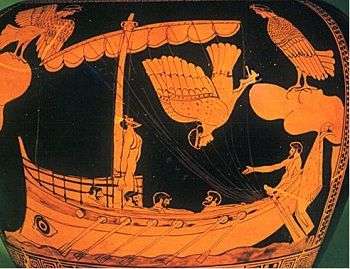
Comparative Mythology
The Sirens’ myth also finds echoes in other cultures, indicating a broader mythological archetype. Similar creatures can be found in Near Eastern and even distant mythologies, where beings with a blend of human and animal features often symbolize the intersection of the natural and supernatural worlds. By comparing these myths, we gain a broader understanding of how different cultures grappled with similar concepts of temptation, danger, and the unknown, albeit through their unique mythological lenses.
2. The Sirens in Greek Literature
Analysis of Sirens in Homer’s “Odyssey”
Homer’s “Odyssey” offers the most iconic depiction of the Sirens. In this epic, the Sirens are alluring yet perilous creatures whose beautiful song lures sailors to their doom. This encounter with Odysseus, who navigates the treacherous waters by having his crew plug their ears and himself tied to the mast, symbolizes the struggle against irresistible temptation. This narrative not only showcases the Sirens’ beguiling nature but also highlights themes of human endurance and the peril of succumbing to seductive distractions.
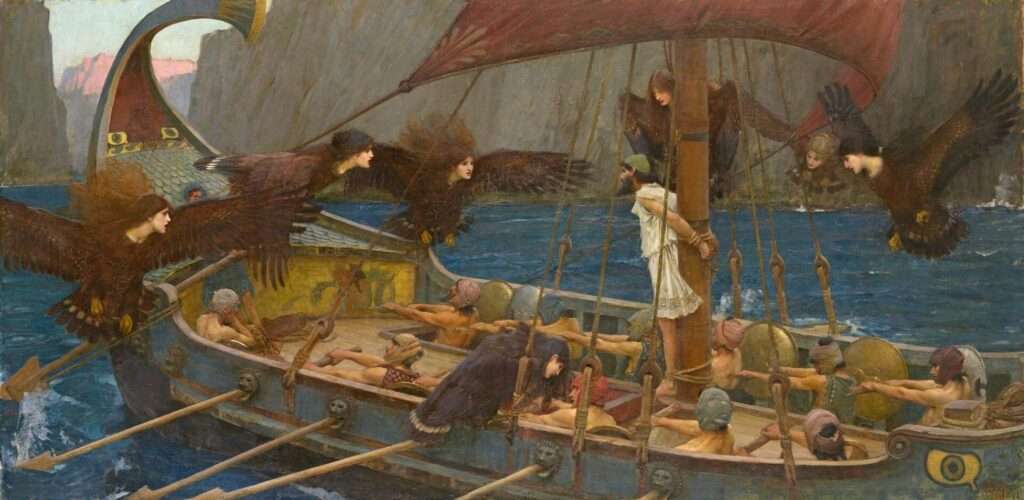
References in Other Greek Works
Beyond Homer, other ancient Greek writers like Hesiod and Euripides expanded on the Siren myth, each adding layers to their character and influence. These works contribute to a more rounded understanding of the Sirens, depicting them in various lights – sometimes as punishers ordained by the gods, other times as mournful figures. Roman adaptations further enriched the Siren mythology, blending Greek ideas with their own cultural narratives.
Literary Interpretation
The Sirens in Greek literature are not just characters but powerful symbols. They represent the dual nature of certain allurements – captivating yet dangerous, promising yet perilous. This duality is reflective of broader themes in Greek mythology, where the line between blessing and curse, knowledge and destruction, is often blurred. The Sirens thus become a metaphor for life’s temptations and the human capacity for wisdom and folly. Their enduring presence in literature speaks to their complexity and the timeless relevance of the themes they embody.
3. The Sirens’ Dual Nature
The Sirens as Symbols of Temptation and Danger
Sirens in Greek mythology are quintessential symbols of temptation and danger. Their mesmerizing song and appearance are emblematic of the seductive allure of something that is simultaneously beautiful and hazardous. This dual nature reflects the Greek understanding of the world, where allure and peril are often two sides of the same coin. The Sirens personify the risk inherent in succumbing to temptations that seem enchanting but can lead to disastrous consequences.
Metaphor for Natural Forces and Human Psychology
The myth of the Sirens extends beyond mere storytelling; it serves as a metaphor for the forces of nature and the complexities of human psychology. In one interpretation, the Sirens represent the unpredictable and often dangerous elements of nature that ancient sailors had to navigate. Psychologically, they symbolize the inner struggles individuals face against their desires and impulses. This metaphorical interpretation allows for a deeper understanding of the human condition, exploring themes of desire, control, and the consequences of one’s choices.
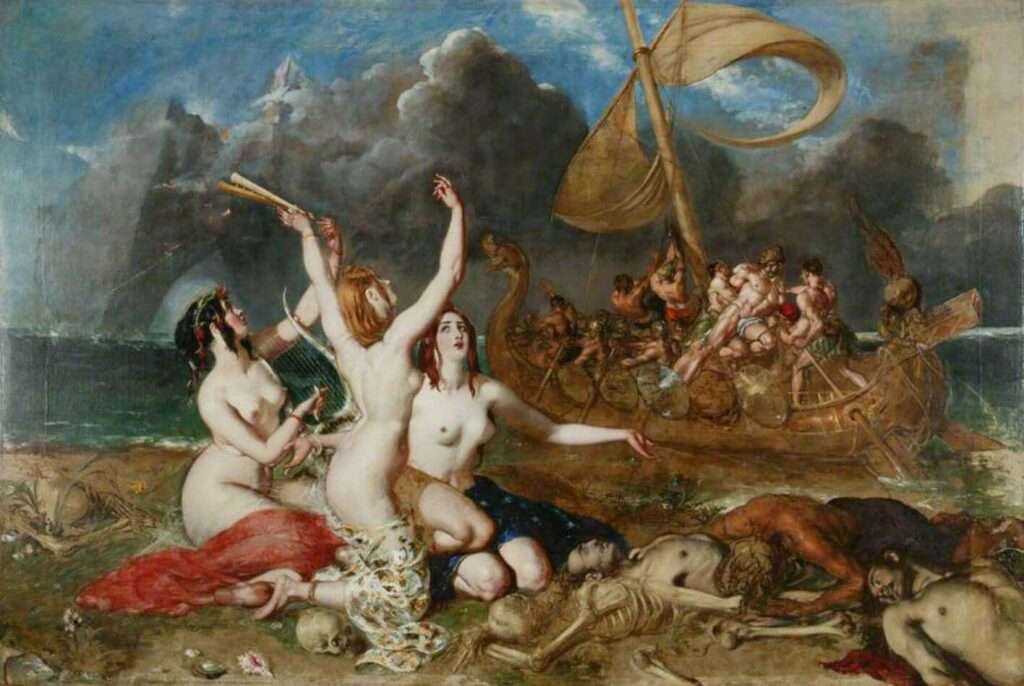
Portrayal as Victims and Villains
Interestingly, the portrayal of Sirens varies considerably across different stories. In some narratives, they are depicted as villains, embodying deceit and doom. In others, they are seen as tragic victims of circumstances beyond their control, cursed to live a half-life and punished for their nature. This dichotomy in their portrayal adds to their complexity as mythological figures, allowing them to be interpreted in multiple ways depending on the narrative context. It reflects the multifaceted nature of myths in general, where characters can simultaneously evoke sympathy and fear, serving as cautionary figures within the rich tapestry of Greek mythology.
4. Artistic and Cultural Impact
Sirens in Ancient Art
The depiction of Sirens in ancient Greek art is as varied and fascinating as the myths themselves. Vase paintings often portray them as bird-like creatures with human heads, playing music or singing, ensnaring unwary sailors. Sculptures and mosaics also offer glimpses into how the ancient Greeks visualized these mythical beings, with some showing a gradual shift towards more human-like forms. These artistic representations not only depict the Sirens but also illuminate the cultural values and perceptions of the time, offering insights into how the Greeks viewed the interplay of the natural and supernatural.
Influence on Later Western Art and Literature
The Sirens’ myth has had a lasting impact on Western art and literature, resonating through the ages. Renaissance artists and later European literati revisited the Sirens, often imbuing them with their epoch’s aesthetic and moral undertones. In these later works, the Sirens often appear more human, reflecting a shift towards exploring their alluring nature. They became symbols of romanticized danger and temptation, featuring in numerous paintings, poems, and stories, each adding new dimensions to their myth.
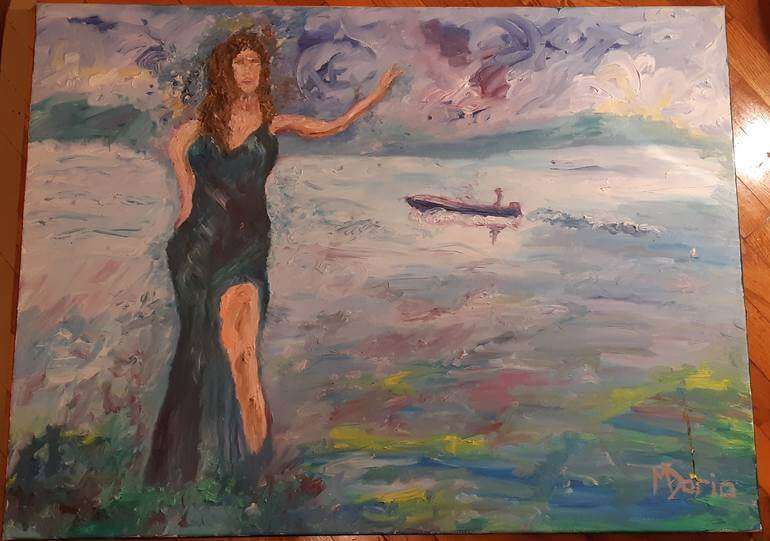
Modern Reinterpretations in Movies and Popular Culture
In contemporary culture, the Sirens continue to captivate the imagination, finding new life in movies, music, and literature. Modern themes and values often reinterpret them, casting them as complex female characters or symbols of broader societal temptations. Various genres in film and literature, from horror to fantasy, have portrayed them, emphasizing their adaptability as symbols. In music, lyrics and concepts frequently reference Sirens, using them metaphorically to discuss allure and danger. This ongoing fascination with the Sirens underscores their enduring appeal and the universality of their underlying themes.
5. Myth vs Reality
Debunking Common Misconceptions about Sirens
One of the most common misconceptions about Sirens is their uniform portrayal as seductive mermaids, a depiction more modern than ancient. Historically, Sirens were initially depicted as part-bird, part-human creatures. Another widespread myth is that the Sirens were evil by nature, intent on luring sailors to their deaths. In contrast, some ancient texts suggest that the Sirens were more complex, perhaps even sorrowful figures, cursed by the gods or seeking something lost. Correcting these misconceptions is vital in understanding the true nature and diversity of their portrayal in Greek mythology.
Historical Context of Mythical Creatures
The way Sirens and other mythical creatures are perceived is heavily influenced by the historical context of the times in which they were imagined and reimagined. The transformation from bird-like beings to humanoid figures reflects changing societal norms, artistic styles, and philosophical outlooks. Understanding this evolution helps in comprehending the multi-layered symbolism of these myths, and how they served as reflections of contemporary human fears, desires, and moral dilemmas.
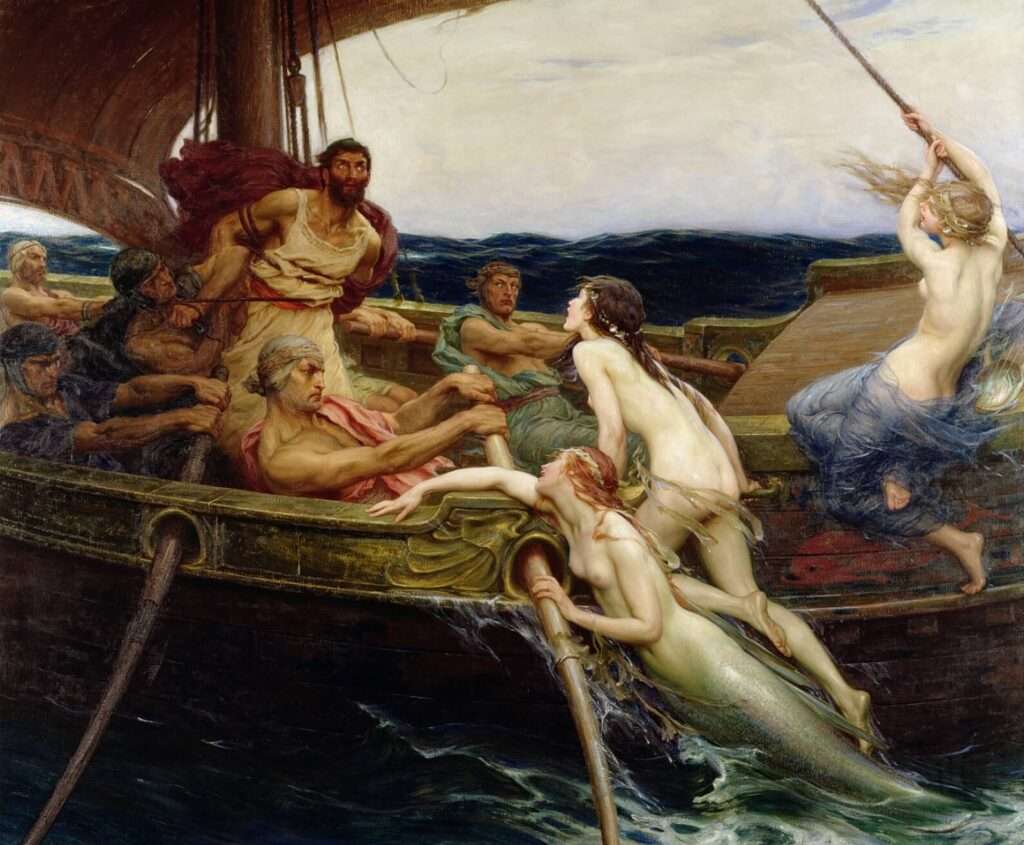
The Blend of Fact and Fiction in Ancient Myths
Ancient myths, including those of the Sirens, often blur the lines between fact and fiction. These stories were not just entertainment but served educational and moral purposes, blending real-life observations with fantastical elements. For example, the dangerous and unpredictable nature of the sea is personified through the Sirens, making the myth a metaphorical warning to sailors. This blending underscores the myths’ role in ancient societies, providing cautionary tales and reflections on human nature, rather than being purely fictional narratives. Understanding this blend is crucial in appreciating the depth and enduring relevance of these ancient stories.
6. Conclusion
The Sirens, with their captivating and complex nature, epitomize the depth and intricacy of Greek mythology. Their evolution from ominous, bird-like figures to enchanting, human-like entities mirrors the shifting landscapes of cultural and artistic norms. The enduring allure of these mythical beings lies in their ability to symbolize various facets of human experience, from the dangers of temptation to the nuances of moral dilemmas. As we delve into their stories, we uncover layers of meaning, reflecting the broad spectrum of human emotions and societal values. The Sirens, therefore, are not just mythical figures; they are a testament to the power of mythology in offering profound insights into human culture, bridging the past with the present in an unbroken narrative of exploration and understanding.
